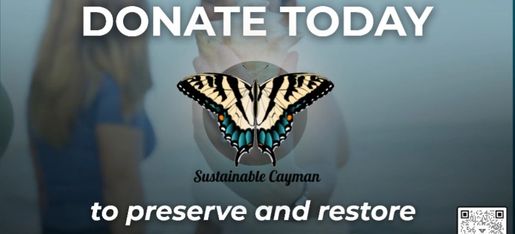Signed in as:
filler@godaddy.com
Signed in as:
filler@godaddy.com
A Call to Action for Responsible Development
The proposed East-West Arterial (EWA) Extension is one of the most significant debates in the Cayman Islands today. With a price tag exceeding US$1 billion over the next 50 years, the road extension from Woodland Drive to Frank Sound Road is a transformative project that promises to reshape the island’s infrastructure. However, the long-term environmental, social, and economic consequences must be carefully weighed. As voters, we must act now to ensure that Route B2, a more sustainable and environmentally responsible option, is chosen over Route B3.
Urgent solutions are needed to reduce the hardships faced by people in the Eastern districts, where long commutes and poor road conditions are affecting daily life. The new road, along with improvements in public transport, is crucial to ease traffic congestion and ensure that residents can access jobs, healthcare, and other essential services in a timely manner. Route B2 is the best option to make this happen quickly, with better integration into existing transportation networks, and would provide the fastest solution to these ongoing issues.

The Environmental Assessment Board (EAB), after conducting a thorough review, strongly recommended Route B2 due to its significantly lower environmental impact. Despite this, the government appears determined to prioritize Route B3, which involves more disruptive construction, including elevated roads and additional concrete structures that could have a devastating impact on the island’s critical ecosystems.
Route B2 provides a sustainable and responsible choice for the future of our islands. It's time to demand that decision-makers reconsider their priorities and choose a route that supports both environmental conservation and economic stability.

The Environmental Assessment Board raised significant concerns about Route B3, including its long-term financial and environmental costs. Here’s why they believe Route B2 is the more responsible choice:
It is clear that Route B3 is the wrong choice for the environment and the future of the Cayman Islands. We need to push for Route B2, which offers a better balance of economic growth and environmental stewardship.

The proposed EWA Extension has raised alarm not only locally but also from international environmental organizations. The route cuts through the Central Mangrove Wetlands, which are crucial for biodiversity, climate regulation, and flood mitigation. Once this critical area is disrupted, it may be lost forever.
We cannot afford to lose these critical ecosystems. It is imperative that Route B2, which avoids these valuable habitats, is chosen to protect the island’s natural resources and mitigate the effects of climate change.

The choice between Route B2 (blue) and Route B3 (white) is not just about road construction. It’s about the future of our environment and the well-being of future generations. The road’s environmental costs—especially in terms of wetlands destruction, flood risk, and long-term sustainability—cannot be ignored.
Voters must act now to ensure that Route B2 is chosen. The Red Horizon Project represents a call to action for responsible development, environmental protection, and a sustainable future for the Cayman Islands.

With the election approaching, it is more important than ever for voters to stay informed and demand accountability from their elected officials. The East-West Arterial project, particularly Route B3, could have devastating long-term effects on the island’s environment, economy, and quality of life.
→ Route B2 is the more sustainable and cost-effective choice for the Cayman Islands. It travels through already degraded habitat, meaning it won’t harm untouched natural areas like Route B3 would. This helps protect important ecosystems.
→ Route B2 is also closer to existing infrastructure, meaning it connects better with roads and services that are already in place, making it easier and quicker to build. For example, the fire station can remain versus being demolished.
→ Route B2 can be completed faster and with lower costs because it doesn't require complex structures like Route B3, which involves elevated roads and bridges that take more time and money to build.
→ Route B2 will help reduce long-term traffic problems, and it supports better use of public transport, which is important as the population grows.
→ By choosing Route B2, we can avoid the risk of overdevelopment in untouched areas. This route ensures climate resilience by not disturbing vital flood-protecting habitats and keeps our natural beauty intact. In addition,
→ Route B2 will keep the island’s tourism strong because it protects the very areas that attract visitors. Ultimately, Route B2 is a smarter choice that balances affordable construction, less disruption, and a sustainable future for the Cayman Islands.
Now is the time to act. Speak to your local representatives, join environmental advocacy groups, and make your voice heard in the election. The future of our environment and our island’s sustainable development depends on it.
Understanding Cayman ecosystems
Supporting human and marine life in the North Sound
NRA Presentation - February 2025
Download PDFCopyright © 2025 Sustainable Cayman - All Rights Reserved.

This Christmas, give the gift of Cayman.
Our island’s story lives in the land and the sea — in every mangrove root, coral reef, and beach walk we pass on to the next generation.
![]()
We use cookies to analyze website traffic and optimize your website experience. By accepting our use of cookies, your data will be aggregated with all other user data.